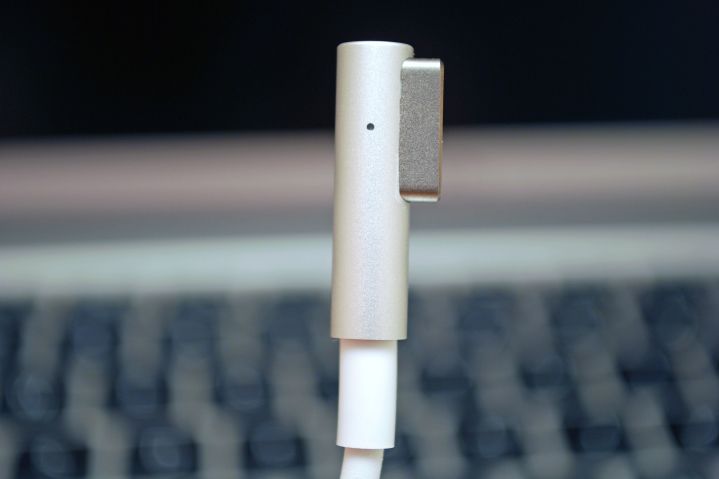It’s an unhappy day when you go to turn your MacBook on after an update or blissful recharging sleep — and something goes wrong. Maybe nothing happens at all. Maybe your Mac tries to turn on but doesn’t get to the login screen without shutting down again.
If this happens, you no doubt want to fix the problem as soon as possible. Taking your Mac into an Apple Store is always an option, but a repair appointment can take time and money. We suggest trying these common solutions first. These tips will work for any MacBook, MacBook Air, or MacBook Pro.
Make sure it isn’t a screen issue

Is your MacBook making noise when you turn it on? That is, can you hear it humming, chiming as it starts up, or turning on the fan as it works? Are the lights on the keyboard turning on? These are all signs that your Mac is starting up as expected, but there’s something wrong with your screen.
The good news is that a screen issue is obvious, and it probably hasn’t affected your data at all. The bad news is that you can’t really fix a MacBook screen on your own. You can try hooking up your Mac to an external display if you desperately need to use it, but in the meantime, you should call an Apple Store and arrange an appointment to see if the display can be fixed or replaced.
Check for electrical issues

If something is wrong with your MacBook’s power, it may not have enough charge to turn on after the battery dies. These problems are relatively easy to diagnose. First, try switching to different outlets to see if your current outlet is faulty.
Second, examine your power cord and adapter for any signs of damage. Even if it looks all right, try to find a compatible MacBook charger and switch out your charger for this model to see if it works. If that fixes the problem, it means your charging cable has failed, and you will need to replace it.
You can also check to see if any other hardware connections are causing issues. Sometimes peripheral devices (particularly those not made by Apple) can cause power problems that prevent MacBooks from fully booting up. Remove all third-party mice, drives, and other accessories. Then connect your MacBook to the charging cable, and then see if it will turn on properly. If it works, one of your accessories probably may not compatible with the current version of MacOS.
Reboot your Mac with a power cycle

You can also power cycle your Mac to try and clear up any internal inconsistencies that may be preventing proper startup. This works if your Mac at least tries to turn on, but it may not be effective on a totally dead MacBook.
Before you begin, unplug anything attached to your MacBook. Then simply hold down your MacBook power button and count for ten seconds. Then release, and press the power button as you normally would to turn the Mac on. This may fix your problem or at least allow you to explore the additional options below.
Start up in Safe Boot

If your MacBook can start booting before shutting down, then there’s a chance you can make it work by going into Safe Boot. This will start your Mac with only basic functionality, which can often get your Mac going and allow you to perform simple tasks. To initiate Safe Boot, start up your Mac and hold down the Shift key as it powers on.
If this works, try shutting down and starting your Mac normally: A Safe Boot can sometimes reset things enough to get everything operating correctly again.
If Safe Boot doesn’t work, try an alternative: Press the D key when powering on, which will run a diagnostic test that can provide you with valuable information about what exactly is happening to your MacBook.
Reset SMC and PRAM/NVRAM

SMC stands for System Management Controller, which manages many important hardware settings on your Mac. PRAM/NVRAM stands for Parameter/Non-Volatile Random Access Memory, and stores settings data for many Mac startup procedures.
Resetting both of these can fix issues that have to do with your Macbook’s battery, fans, and power, among other features. Doing so often helps fix problems with MacBooks booting up poorly. We have a guide here that can walk you through the steps, but don’t worry: The process is quite easy and should only take a few minutes to complete.
Restore MacOS in Recovery Mode

MacOS’ Recovery Mode can help fix a variety of problems. Some of the issues the tool can fix involve things like Time Machine issues, repairing or wiping a hard disk, or getting online help from apple. The tool can also help you overwrite your MacOS to a new version while still retaining your data.
This gives you the benefit of wiping everything and starting again without backing up essential items. Doing this can help fix problems that can impede MacOS’s successful operation, including improper loading.
Our guide to resetting MacOS is a great place to start. In this comprehensive guide, we deal with everything from factory resetting your Mac completely, to reinstalling your original operating system, to completely erasing personal data on your computer. We cover your options for overwriting installations, too.
To get started, restart your Mac and hold down the Command and R keys until a menu appears. Next, choose Reinstall MacOS, and the tool will walk you through the next steps.



